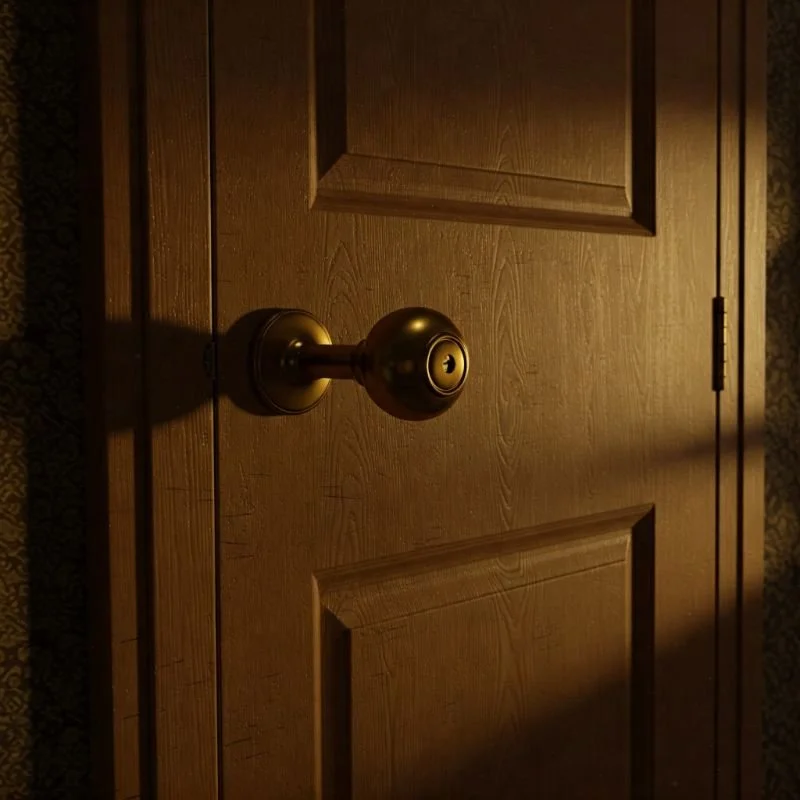How to Open a Locked Bedroom Door Fast
Discover practical methods to open a locked bedroom door quickly without damage. Essential tips for homeowners facing unexpected lockouts.
We've all been there—standing outside a locked bedroom door, feeling that sinking sensation in our stomach. Maybe your toddler accidentally locked themselves in, or perhaps you've misplaced your key for the umpteenth time. Whatever the case, knowing how to open a locked bedroom door fast can save you time, money, and a whole lot of frustration. It's one of those random life skills that doesn't seem important... until suddenly, it's absolutely crucial.
In this comprehensive guide, I'll walk you through various techniques to tackle this common household predicament. From credit card tricks to bobby pin maneuvers, you'll discover solutions that range from beginner-friendly to somewhat advanced. The beauty is, you won't need fancy locksmith tools for most of these methods—just everyday items that are probably lying around your home right now.
Let's dive in and turn that doorknob mishap into a minor blip in your day rather than a full-blown crisis!
Understanding Your Lock Type Before Attempting to Open It
Before jumping headfirst into any door-opening technique, you'll need to identify what kind of lock you're dealing with. I mean, you wouldn't bring a knife to a gunfight, right? Similarly, different locks require different approaches.
Common Bedroom Door Lock Types
Bedroom doors typically feature one of these lock styles:
Doorknob locks: The most common type, with the locking mechanism built into the knob itself.
Deadbolts: Less common for bedrooms but offer more security.
Privacy locks: These have a simple push-button or turn-button on the inside and usually a small hole on the outside.
Smart locks: Modern homes might have electronic locks requiring PIN codes or smartphone access.
Take a moment to examine your door. Is there a keyhole on the outside? A small hole in the center of the knob? Understanding this will dramatically increase your chances of success when you're trying to figure out how to open a locked bedroom door fast.
Quick Solutions Using Household Items
Alright, so you're locked out, and panic's starting to set in. Take a deep breath! Your salvation might be as close as your wallet or junk drawer.
The Credit Card Method
This technique works wonders for spring-loaded latch locks (the most common type in bedrooms):
Choose a flexible plastic card you don't mind potentially damaging
Insert the card between the door and frame above the lock
While applying pressure on the door, slide the card downward
Bend the card away from the hinges, forcing the latch back
Simultaneously push the door open
I once saved my roommate who had locked herself out wearing nothing but a towel—talk about embarrassing! The credit card trick had us back in business in less than 30 seconds flat.
Bobby Pin Magic
If your bedroom door has a privacy lock with a small hole, here's what to do:
Straighten a bobby pin except for the curved end
Insert the straight end into the hole on the doorknob
Push inward until you feel resistance
Turn or push the pin (depending on your lock type)
The door should unlock with a satisfying click
This method's practically foolproof for those simple privacy locks. It's how my grandmother used to "break into" the bathroom when one of us kids accidentally locked the door.
Paper Clip Prowess
For keyhole locks, try this approach:
Straighten two paper clips, leaving a small hook at the end of one
Insert the hooked clip into the bottom of the keyhole
Place the straight clip at the top of the keyhole and apply slight upward pressure
Wiggle the hooked clip while maintaining pressure with the straight one
Turn the mechanism when you feel the pins align
I won't lie—this takes practice and a bit of finesse. But hey, it's how I impressed my girlfriend when she locked her jewelry box and lost the key!
Advanced Techniques for How to Open a Locked Bedroom Door Fast
Sometimes the situation calls for slightly more sophisticated approaches. These methods require a steady hand and a touch more patience.
Removing the Doorknob
When simpler methods fail, try this approach:
Examine the doorknob for a small slot or hole on the shaft
Insert a small screwdriver or similar tool into this slot
Press the inner mechanism (usually a catch or pin)
While pressing, pull the doorknob away from the door
With the knob removed, you can manipulate the locking mechanism directly
This method saved my bacon when my 3-year-old nephew locked himself in our guest bedroom during a family gathering. The look of relief on my sister's face was absolutely priceless!
The Screwdriver Solution
For doors with visible screws on your side:
Find a screwdriver that matches the screw heads
Remove the screws from the doorknob plate
Take off the doorknob handle
Manipulate the internal locking mechanism
Open the door and reattach the knob afterward
It's a bit more invasive but gets the job done when you're truly desperate.
Preventive Measures to Avoid Getting Locked Out Again
An ounce of prevention is worth a pound of cure, as they say. Let's look at how to prevent future lockouts.
Strategic Key Placement
Consider these hiding spots for spare keys:
With trusted neighbors
In a sealed container in your garden (not under the obvious doormat!)
In your wallet or purse in a hidden compartment
Installing a combination lockbox in a discreet location
I've started keeping a spare bedroom key taped inside our medicine cabinet—it's saved me numerous times when my wife accidentally locks our bedroom door.
Maintenance Matters
Regular lock maintenance can prevent lockouts:
Apply graphite powder to sticky mechanisms twice yearly
Check and tighten loose screws on doorknobs
Replace worn-out components before they fail completely
Consider upgrading to more reliable lock systems
Teaching Family Members
Especially important for households with young children:
Show kids how privacy locks work
Practice emergency unlocking techniques together
Establish rules about door locking
Keep unlocking tools in accessible (but safe) locations
After my daughter got trapped in her bedroom when the lock jammed, we had a family "door lock workshop." Now everyone knows how to open a locked bedroom door fast, and we haven't had a panic situation since!
When to Call a Professional
Let's be realistic—sometimes DIY just won't cut it. Here are scenarios when you should throw in the towel and call a locksmith:
The door has an advanced security system
You've tried multiple methods without success
The lock is antique or unusually designed
There's an emergency situation (like a child locked inside)
You risk damaging an expensive door
Remember, locksmiths have specialized tools and years of experience. Sometimes it's worth paying for their expertise rather than potentially causing expensive damage.
Special Situations and Their Solutions
Different scenarios call for different approaches. Let's address some special cases.
When a Child is Locked Inside
Stay calm and speak reassuringly through the door
Guide them through unlocking it if they're old enough
Try the hole-in-knob method with a straightened wire
If unsuccessful, consider removing the hinges
In true emergencies, breaking the door may be necessary
Dealing with Antique Locks
Older homes often have charming but temperamental locks:
Research your specific lock type online
Look for skeleton keys that might work
Use gentle methods to avoid damaging historical hardware
Consider consulting with specialists in antique locks
My in-laws' Victorian-era home has the most beautiful brass bedroom doorknobs—but they're absolutely infuriating when they lock unexpectedly. We've learned that a gentle touch and patience work better than brute force.
Smart Lock Malfunctions
For the tech-savvy home:
Check if the batteries need replacement
Look for a mechanical override option
Restart the system if possible
Contact the manufacturer's support line
Environmental Considerations
Being environmentally conscious while solving your locked door dilemma:
Choose reusable tools rather than disposable ones
Avoid chemical lubricants that might harm pets or children
Consider sustainable materials when replacing damaged components
Repair rather than replace when possible
Conclusion
Knowing how to open a locked bedroom door fast is one of those skills you hope you'll never need but will be eternally grateful for when you do. From simple credit card slides to more involved doorknob removals, you're now equipped with a variety of techniques to handle this common household emergency. Remember, patience is key—rushing can lead to damaged doors or locks. And when all else fails, there's no shame in calling a professional. After all, isn't peace of mind worth more than the locksmith's fee? Keep these tips in your back pocket, and you'll never be stuck on the wrong side of a door for long!
Read next: Step-by-Step Guide on How to Hang a Door
Frequently Asked Questions
1. Can I use a credit card on any type of lock?
Works only on spring-loaded latches, not deadbolts or smart locks.
2. Will these methods damage my door?
Most techniques cause minimal damage if done carefully with the right tools.
3. What's the fastest method in an emergency?
The small hole technique for privacy locks is quickest in most situations.
4. Can I call 911 if someone's locked inside?
Yes, especially if it's a child or someone needing medical attention.
5. How much does a locksmith typically charge?
Expect to pay between $75-150 depending on time of day and lock complexity.





